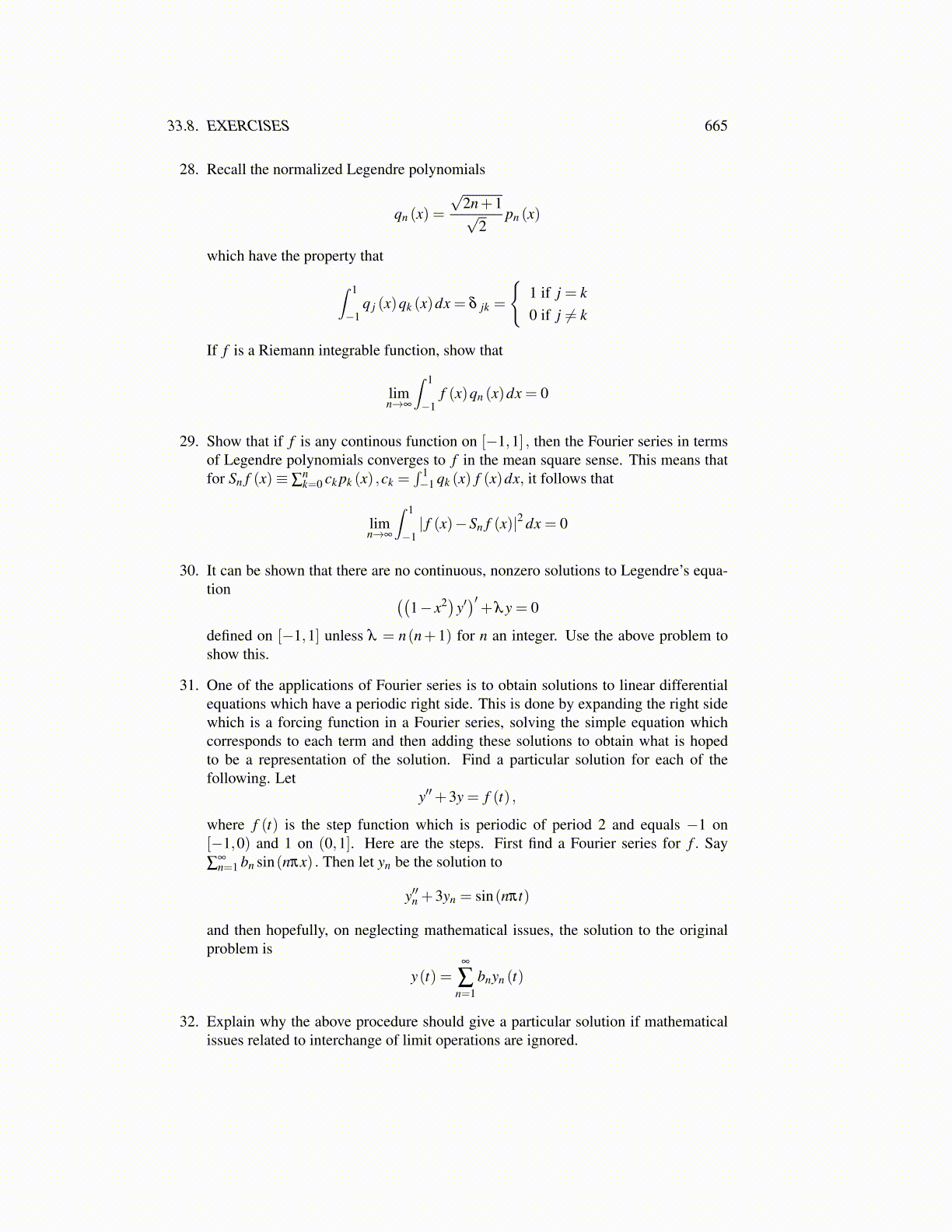
33.8. EXERCISES 665
28. Recall the normalized Legendre polynomials
qn (x) =√
2n+1√2
pn (x)
which have the property that
∫ 1
−1q j (x)qk (x)dx = δ jk =
{1 if j = k0 if j ̸= k
If f is a Riemann integrable function, show that
limn→∞
∫ 1
−1f (x)qn (x)dx = 0
29. Show that if f is any continous function on [−1,1] , then the Fourier series in termsof Legendre polynomials converges to f in the mean square sense. This means thatfor Sn f (x)≡ ∑
nk=0 ck pk (x) ,ck =
∫ 1−1 qk (x) f (x)dx, it follows that
limn→∞
∫ 1
−1| f (x)−Sn f (x)|2 dx = 0
30. It can be shown that there are no continuous, nonzero solutions to Legendre’s equa-tion ((
1− x2)y′)′+λy = 0
defined on [−1,1] unless λ = n(n+1) for n an integer. Use the above problem toshow this.
31. One of the applications of Fourier series is to obtain solutions to linear differentialequations which have a periodic right side. This is done by expanding the right sidewhich is a forcing function in a Fourier series, solving the simple equation whichcorresponds to each term and then adding these solutions to obtain what is hopedto be a representation of the solution. Find a particular solution for each of thefollowing. Let
y′′+3y = f (t) ,
where f (t) is the step function which is periodic of period 2 and equals −1 on[−1,0) and 1 on (0,1]. Here are the steps. First find a Fourier series for f . Say∑
∞n=1 bn sin(nπx) . Then let yn be the solution to
y′′n +3yn = sin(nπt)
and then hopefully, on neglecting mathematical issues, the solution to the originalproblem is
y(t) =∞
∑n=1
bnyn (t)
32. Explain why the above procedure should give a particular solution if mathematicalissues related to interchange of limit operations are ignored.